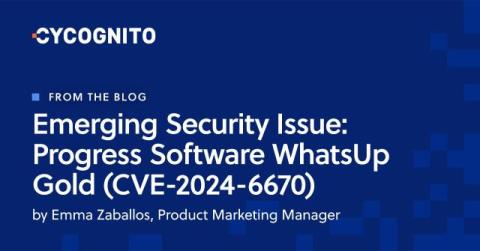Six Signs that Exposure Management is Right for Your Organization
Whether you’re the CISO or part of the incident response team, it’s likely you have heard of exposure management (EM). Introduced by Gartner in 2022 as the evolution of vulnerability management (VM), the name “exposure management” was adopted by vendors faster than you can say “next gen” or “AI-powered”. Unfortunately for consumers the hype added more confusion than clarity. This blog is a chance to reset expectations.











